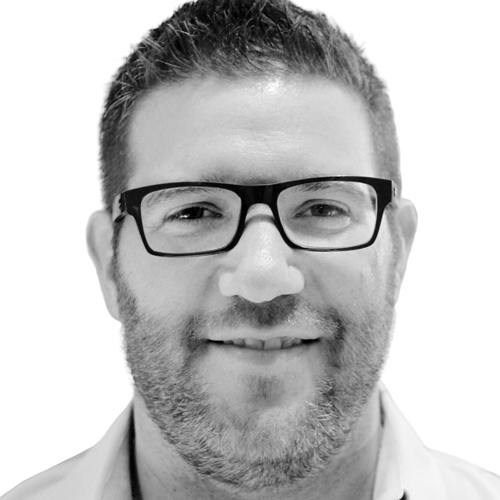Craig Martin strode cautiously across a girder twenty-eight stories above the ground on a high-rise in Florida. The young construction worker didn’t suspect his career would lead him to supervising the design, testing, manufacturing, and delivery of technology designed to keep malware, phishing, and other cyberattacks from plaguing organizations worldwide. But that is the path that led Martin to become senior vice president of operations and global facilities, for cybersecurity provider FireEye.
The Milpitas, California-based company designs, develops, and delivers a full suite of network, endpoint, and email security products. FireEye also provides consulting and threat intelligence services and offers turnkey third-party security solutions working with its ecosystem of partners.
FireEye is a leader in responding to today’s most important cyberattacks. Martin compares these activities to a US Navy Seal team diving into the choppy waters of a massive security breach for major retailers, such as Target or The Home Depot. FireEye’s consultants discover the source of the hack and the method of attack, while working to minimize the damage.
The cybersecurity industry didn’t exist in the 1970s when Martin started thinking about returning to college after a slowdown in the construction industry. His interest had been in architecture, but inspired by his father’s career as a Pan American World Airways mechanic—complete with international flight benefits—Martin shifted his study to transportation and logistics.
Upon graduation, Martin found better opportunities in the transportation and logistics industry than were available in the airline industry and spent thirteen years at Hewlett-Packard (HP). He was the company’s first physical distribution manager, managing logistics from the receipt of raw materials in the manufacturing process through customer delivery, at a time when Japanese manufacturing techniques that focused on material flow were topical.
Part of that experience included designing a factory and optimizing its design for manufacturing. This was a highly collaborative, division-wide project in which all assumptions and prior processes were tossed aside, and the product and process were designed concurrently for maximum efficiency. The effort received rave reviews.
Before joining FireEye in 2012, Martin worked for several start-ups as well as established companies, including Juniper Networks, where he was the vice president of supply chain operations. The company’s complex products were as big as refrigerators with infinite combinations, whereas at FireEye, the focus is on eliminating the complexity and burden of cybersecurity.
“Our job has been to keep cybersecurity as simple as possible,” Martin explains. “It’s like a standard record player. The software you put on top of it is where you get the differentiation.” That means that FireEye’s products do not utilize specialized components in which malware might be encoded surreptitiously. “Everything we build is carefully engineered so that FireEye can’t be compromised in the supply chain,” Martin adds.
That simplification was recently amplified by a refresh of the company’s product line that began in late 2016. Instead of just upgrading the appliances’ processor cores and memory, Martin sought to accomplish something more.
“I wanted to use the refresh as a catalyst for rethinking everything we do from a production standpoint, much in the way I had done at HP in years past,” Martin says. “I wanted us to challenge each other to do things more efficiently.” He had two objectives in mind: make fundamental changes to improve efficiencies in cost and inventory, and give his team a forum to learn and grow from each other.
Martin challenged team members to think about how they could do their jobs ten times more efficiently. Inspired by the challenge of the 1960s space program to reach the moon within the decade, the refresh effort fast-forwarded to current technical challenges and was nicknamed the Mars project. Teams of experts enlisted from the company’s hardware, supply chain, demand, and service departments were dubbed “treks.”
The treks worked together to reduce the number of FireEye products from fifty-eight to twenty-eight and lower the number of base models from twenty-two to six. This decreased production time for products from five days to two days, which eased the company’s end-of-quarter production crunch.
And reduced production time means FireEye does not have to build up product inventory at its contract manufacturers as far in advance. FireEye’s manufacturers now can wait for the order to materialize before building the product, Martin says.
The product refresh also reduced the number of components that must be stored in inventory. Even though all of FireEye’s products are produced by contract manufacturers, these savings enable them to offer FireEye lower pricing.
The Mars project also made a dramatic improvement in testing. FireEye’s products were being tested for correct operation at the manufacturers, but the process was lengthy, requiring about forty-eight hours and slowing distribution of the finished product to customers. So, Martin challenged the team to reduce the testing time to an hour.
“The team came back and said, ‘We can’t get to an hour, but we can get to three hours,’” Martin recalls. “We were at forty-eight hours, so that was pretty good. It’s really satisfying to see the team camaraderie and culture allow for active discussions, ultimately coming up with solutions that address everyone’s needs.”
Letting the team solve the problem themselves is also a must for Martin because his background is not technological. “I tend to be more hands-off,” he says. “What can I do to get the barriers out of your way? How can I help? I can ask challenging questions to tease out the right answer. I enjoy collaborating with peers.”
The most exciting result is the fact that customers will benefit from these improvements, Martin says. The company has already been able to deliver new products with better detection efficacy and performance at the same price since the Mars project.
“From our long relationship with FireEye, we at Flex appreciate Craig’s strong leadership and impeccable integrity,” says Johannes Oberhofer Lomeli, vice president and general manager at Flex LTD. “Project Mars was an impressive demonstration of his style. He set seemingly impossible goals to drive us all towards a great breakthrough.”
Drawing from his unexpected career path, Martin’s advice to young professionals is to be open to opportunities. “I can’t say I’ve had an explicit end goal, only just to really take advantage of all the opportunities that come up,” he says. “Keep your eyes and ears open. Always be curious. Learn, grow, and contribute when an opportunity presents itself. That’s a pretty loose-knit kind of philosophy, but in my case, it has worked out well. I love what I do. I wouldn’t keep doing it if I didn’t.”
Photo: Achille Bigliardi















